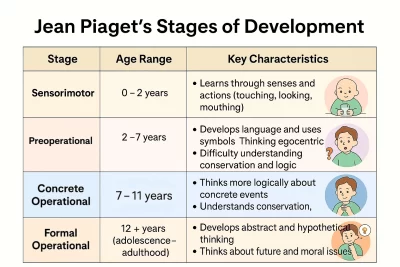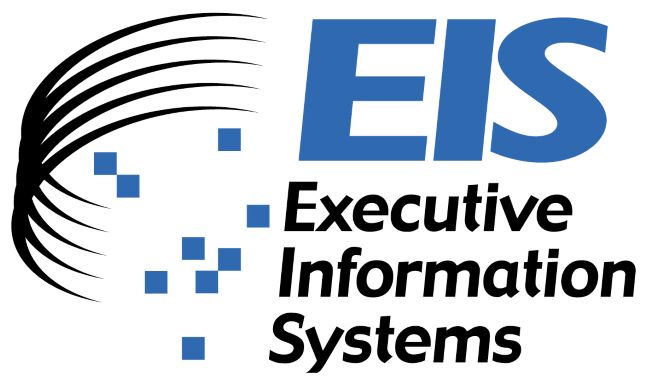
Executive Information System: Unlocking Strategic Insights

In today's rapidly evolving business landscape, executive information systems (EIS) have emerged as a crucial tool for senior management. These systems provide essential data in a summarized and easily accessible graphical format, including sophisticated digital dashboards that facilitate the interpretation of complex information. By condensing vast amounts of data into concise visual formats, EIS empowers executives to make informed decisions that drive organizational success.
As the volume of data continues to grow, the importance of leveraging an executive information system becomes increasingly apparent. Leaders require a comprehensive view of their operations and performance metrics to navigate challenges and seize opportunities. However, while these systems offer formal, structured information, it is essential for managers to also integrate various informal sources to complement their decision-making processes and develop strategic insights.
- Understanding Executive Information Systems
- The Role of Data Visualization in Executive Decision Making
- Key Features of Effective Executive Information Systems
- Benefits of Implementing Executive Information Systems
- Challenges in Utilizing Executive Information Systems
- Integrating Informal Sources into Executive Insights
- Future Trends in Executive Information Systems
- Conclusion: Empowering Leadership with Strategic Insights
Understanding Executive Information Systems
Executive information systems are sophisticated technological innovations designed to assist managers in acquiring and analyzing information critical to their strategic planning and decision-making processes. These systems are built on a foundation of vast amounts of data collected from various sources, including internal databases and external market research. By filtering and presenting this data through user-friendly interfaces, EIS enables executives to quickly assess trends, monitor key performance indicators, and understand the broader business environment.
The design of an EIS often involves the integration of various data sources into a single platform, ensuring that executives can access all necessary information without needing to navigate multiple systems. This centralized approach not only saves time but also enhances the quality of insights derived from the data. In this context, an executive information system serves as a critical asset for organizations seeking to maintain a competitive edge in their respective industries.
The Role of Data Visualization in Executive Decision Making
At the core of effective executive information systems is the ability to present data visually. Data visualization transforms complex datasets into intuitive graphical representations, making it easier for executives to comprehend and analyze information. By utilizing elements such as charts, graphs, and infographics, EIS enhances clarity and aids executives in identifying patterns and correlations that may not be readily apparent in raw data.
Effective data visualization in an executive information system can drive better decision-making by allowing managers to grasp the implications of their data quickly. For example, a well-designed dashboard could showcase sales performance against targets, revealing trends over time and facilitating an immediate understanding of where adjustments may be needed. As a result, data visualization becomes an indispensable aspect of leadership, providing the insights needed to respond proactively to market changes.
Key Features of Effective Executive Information Systems
To maximize the value of an executive information system, it must possess several key features tailored to meet the needs of senior management. Here are some essential components:
- User-Friendly Interface: An EIS must be intuitively designed, enabling executives to navigate easily and access data without extensive training.
- Customization: The ability to customize dashboards and reports allows executives to focus on relevant data that aligns with their strategic goals.
- Real-Time Data Access: Real-time updates ensure that decision-makers are utilizing the most current information, which is essential in a fast-paced business environment.
- Data Integration: Effective EIS integrates data from various sources, providing a comprehensive view of organizational performance.
- Analytical Tools: Built-in analytical capabilities allow executives to conduct detailed analyses and generate forecasts based on historical data.
By incorporating these features, an executive information system not only facilitates ease of use but also enhances the overall effectiveness of strategic decision-making processes.
Benefits of Implementing Executive Information Systems
The adoption of executive information systems yields numerous benefits for organizations. By streamlining access to critical data and providing insightful analytics, EIS allows senior managers to make timely decisions that improve overall business performance. Some of the primary benefits include:
- Improved Decision-Making: The ability to access and analyze data quickly leads to more informed and timely decisions, reducing the risk of errors.
- Enhanced Strategic Planning: EIS enables executives to identify trends and anticipate future challenges, allowing for proactive strategic planning.
- Increased Efficiency: Automating data gathering and analysis saves significant time for executives, enabling them to focus on higher-level strategic initiatives.
- Better Resource Allocation: By providing insights into various operational areas, EIS helps leaders allocate resources more effectively to achieve organizational goals.
These benefits underscore the value of implementing an executive information system as a vital part of modern management practices.
Challenges in Utilizing Executive Information Systems
While executive information systems offer several advantages, organizations may face challenges when implementing and using these systems effectively. Some common hurdles include:
- Data Quality Issues: Poorly maintained data can lead to inaccurate insights, undermining the reliability of the EIS and eroding trust among executives.
- Resistance to Change: Employees may be resistant to adopting new technologies, necessitating change management efforts to promote acceptance.
- Integration Difficulties: Merging data from various systems can be a complex process, requiring significant time and effort to achieve a seamless EIS.
- High Implementation Costs: Developing and deploying a robust executive information system can involve substantial investment, which may pose a challenge for some organizations.
Addressing these challenges is essential for maximizing the potential of an executive information system and ensuring it delivers the expected value.
Integrating Informal Sources into Executive Insights
In addition to formal data from executive information systems, senior managers often rely on informal sources to enrich their insights. These informal sources can include anecdotal evidence, peer opinions, market trends identified through networking, or insights gathered from customer feedback. Integrating these informal sources into decision-making processes can enhance the depth and breadth of insights available to executives.
Utilizing informal sources alongside EIS data allows managers to paint a more comprehensive picture of their organization's environment. For example, understanding employee sentiment through informal channels can complement the quantitative data derived from EIS, leading to more robust decision-making. By recognizing the value of informal insights, leaders can establish a more holistic approach to strategy and management.
Future Trends in Executive Information Systems
The landscape of executive information systems continues to evolve, driven by technological advancements and the growing need for data-driven decision-making. Several trends are emerging that are shaping the future of EIS:
- Increased Use of Artificial Intelligence: AI and machine learning technologies are expected to play a significant role in enhancing the analytical capabilities of EIS, allowing for predictive analytics and automation.
- Mobile Access: As mobile technology becomes more integrated into the workplace, the need for mobile-friendly EIS solutions that provide executives access to critical data on-the-go is growing.
- Enhanced Collaboration Tools: Future EIS platforms are likely to incorporate features that facilitate collaboration among management teams, enabling real-time discussions and sharing of insights.
- Focus on Data Security: With the increasing importance of data privacy, future EIS solutions will prioritize robust security measures to protect sensitive information.
These trends can fundamentally change how organizations utilize executive information systems, leading to enhanced decision-making processes and improved organizational performance.
Conclusion: Empowering Leadership with Strategic Insights
In conclusion, executive information systems are essential tools for organizations seeking to harness the power of data in their strategic decision-making processes. By providing executives with timely access to critical information and enabling data visualization, EIS enhances the ability of leadership to make informed decisions that drive business success. As organizations continue to evolve and face new challenges, the importance of integrating both formal systems and informal insights will only grow.
By embracing the potential of executive information systems and staying attuned to emerging trends, organizations can empower their leaders with the strategic insights necessary for navigating today's complex business environment. Ultimately, effective EIS implementations can lead to improved efficiency, greater foresight in planning, and a lasting competitive advantage.
Did you find this article helpful? Executive Information System: Unlocking Strategic Insights See more here Education.
Leave a Reply






Related posts